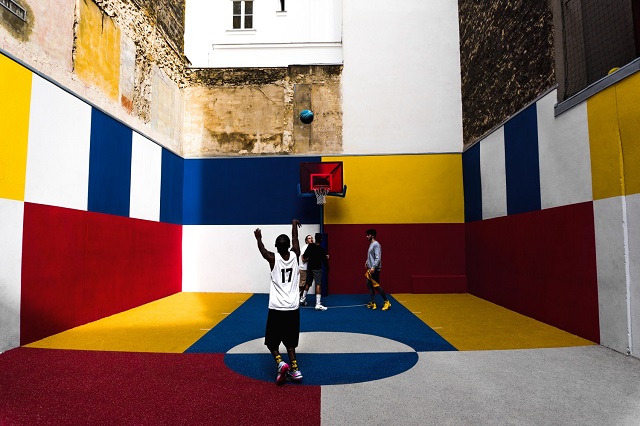As a longtime yoga teacher, I am blessed to have the opportunity to guide students in the practice of yoga.
While I so enjoy the chance to see students completely immersed in their bodies, the true gift is when I get to share with them the tools to implement this practice off the mat. I do that in the form of a different message each week, usually a spark of inspiration that comes from something in my life.
I never know where my inspiration will come from—and this time, it came as I watched my son shoot free throws at basketball practice. Over and over, he attempted to get the ball into the basket. As I watched, I began to think about the concept of “practice” as it is defined in the dictionary: “repeated exercise in or performance of an activity or skill so as to acquire or maintain proficiency in it.”
Of his over 30 shots, only a few went in—and that is how it is supposed to be at first. Then slowly—with practice, focus, and patience—the ratio of shots to baskets will improve. Practice makes us better, stronger, and more accurate in whatever “activity or skill” we are looking to achieve.
From there, I began to ponder further—what about the “practice” of being a better person? What about the “practice” of finding peace and joy within ourselves in the present? Culturally, why do we not view the practice of being happy in the present moment in the same way we view the practice of a sport?
I believe the answer is simple. We can’t measure improvement in the same way. Instead of steady, measurable proficiency, subtle karmic shifts occur over time with a regular “practice of happiness” that are less tangible but incredibly powerful. They can be so subtle at times that we may not realize they connect back to the practice—but they always do.
This powerful “practice of happiness” has three parts: awareness, analysis, and acceptance. The “Third Principle of Karma” (Principle of Humility) can help guide us through the steps using its three tenets:
1. What we refuse to see will continue for us. This teaches us how to be aware of patterns in our thoughts and actions that are not serving us. It is extremely difficult to change what we are not aware of, and it can be quite scary to become aware of that which we need to change in order to be truly happy. This concept is powerful, because it explains that the universe will continue to send us messages until we learn the lesson we need to learn. If we do not learn the lesson, the pattern will continue until we do. We have the power to change the patterns of our karma, but we just have to see them first.
2. What we dislike in others are the things we must change within ourselves. This is the message of self-analysis. Often when we find ourselves judging, blaming, or angry at someone else, we are actually reacting to something we don’t like within ourselves. Perhaps our anger or dislike really comes from feelings of inadequacy or insecurity inside us that, for some reason, this other person makes us see. If we go inside, become aware, analyze, and “practice” letting go of that insecurity, this person no longer represents those fears, and our perspective begins to change.
3. Even if things aren’t working out how we want them to in the moment, the positive effort we make now will eventually pay off for us. To quote the sage, Vasistha, “There is no power on earth greater than the right action in the present moment.” This is the message of acceptance. Once we truly accept that we are responsible for our own actions—and that what we do, think, and say now will directly affect our future path—we are able to put all three elements into action and become proficient in the “Practice of Happiness.”
I shared my thoughts about the “Practice of Happiness” this week with my classes, and I asked my students to practice awareness, analysis, and acceptance in their bodies. I reminded them to be their own guides on their mats. First, to listen to the body (awareness). Then, to analyze by continuing to ask themselves, “Will this pose make my body happy?” And finally, to find acceptance about what was and (more importantly) what was not available for them on their mats. The “practice of happiness”—just like the broader practice of yoga—starts on the mat in our bodies, and then (as we become more proficient), becomes our practice off the mat.
At the end of one of my classes, a student came up to me and shared a wonderful quote by Carl Jung: “Your visions will become clear only when you can look into your own heart. Who looks outside, dreams; who looks inside, awakes.” It all starts by looking within. If we do, it is all there inside us. We become aware, alive, and happy. We just have to practice!
Namaste.
~
Relephant:
Happiness is a Skill: 3 Ways to Master It.
~
Author: Allison Waguespack
Image: Unsplash/Serge Kutuzov
Editor: Yoli Ramazzina
Copy Editor: Travis May







Read 0 comments and reply